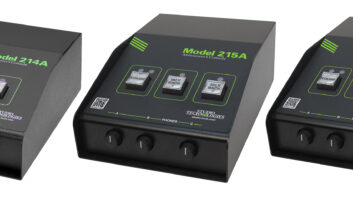Radio receiver technologies will get some scrutiny as part of the upcoming Broadcast Engineering Conference at the NAB Show. Veteran engineer Glynn Walden of CBS Radio will lead this Monday afternoon batch of presentations, including one that promises a way to improve HD Radio signal coverage.
“In-vehicle” tech is the subject of the first presentation, in which Chia-Lin Simmons of Harman International and Robert Acker of Aha will discuss “Three In-Car Trends Broadcasters Need to Know About.” According to a summary, “The car will be just another place consumers get the Internet entertainment they want. Consumers are flocking more and more to the Internet for entertainment whether that is on their home laptop or while walking with their phone. When they get in the car, they want to access the same content. Coming down the pike will be the ability for these consumers to access this content — but in a form that is right for the road.”
Then an “RDS Station Workshop” will explore the NRSC G300 RDS usage guidelines. Presenters here include Alan Jurison of Clear Channel, who writes frequently about RDS in Radio World, and Barry Thomas of Lincoln Financial Media.
That’s followed by “Adaptive Impedance Matching (AIM) for Electrically Small Radio Receiver Antennas” by Brian Kroeger, chief scientist for iBiquity Digital. He’ll discuss a technique to overcome limitations of receiver tuner implementations, while promising “superior performance with electrically small antennas.” AIM is described as an adaptive feedback technique that attempts to maintain maximum signal gain at the tuned frequency. “Resonant tuning of a high-Q preselection filter is achieved using a signal metric from a baseband processor. As the received signal level decreases (due to listener tuning, antenna orientation, human-body effects, etc.), the baseband processor adaptively retunes the preselection filter to provide maximum signal voltage to the low noise amplifier (LNA).” Kroeger says AIM eliminates the need for receiver calibration associated with current preselection filter tuning techniques, and is independent of the intermediate frequency, since local oscillator tracking is not performed.
The Monday receiver session concludes with a discussion by Brana Vojcic and Mark Fowler of Digital PowerRadio, who will talk about an approach they believe will significantly improve the signal coverage radius and quality for FM and AM HD Radio, “assuring improved reception and strong HD reception into smart phones and other mobile and portable devices, as well as car and table top radios.” This approach involves “only very feasible changes in the baseband receiver chip in HD radio receivers.” They will also present improvements that can be achieved by modified HD Radio air interfaces for systems that have not yet been deployed, such as all-digital AM and FM radio.












